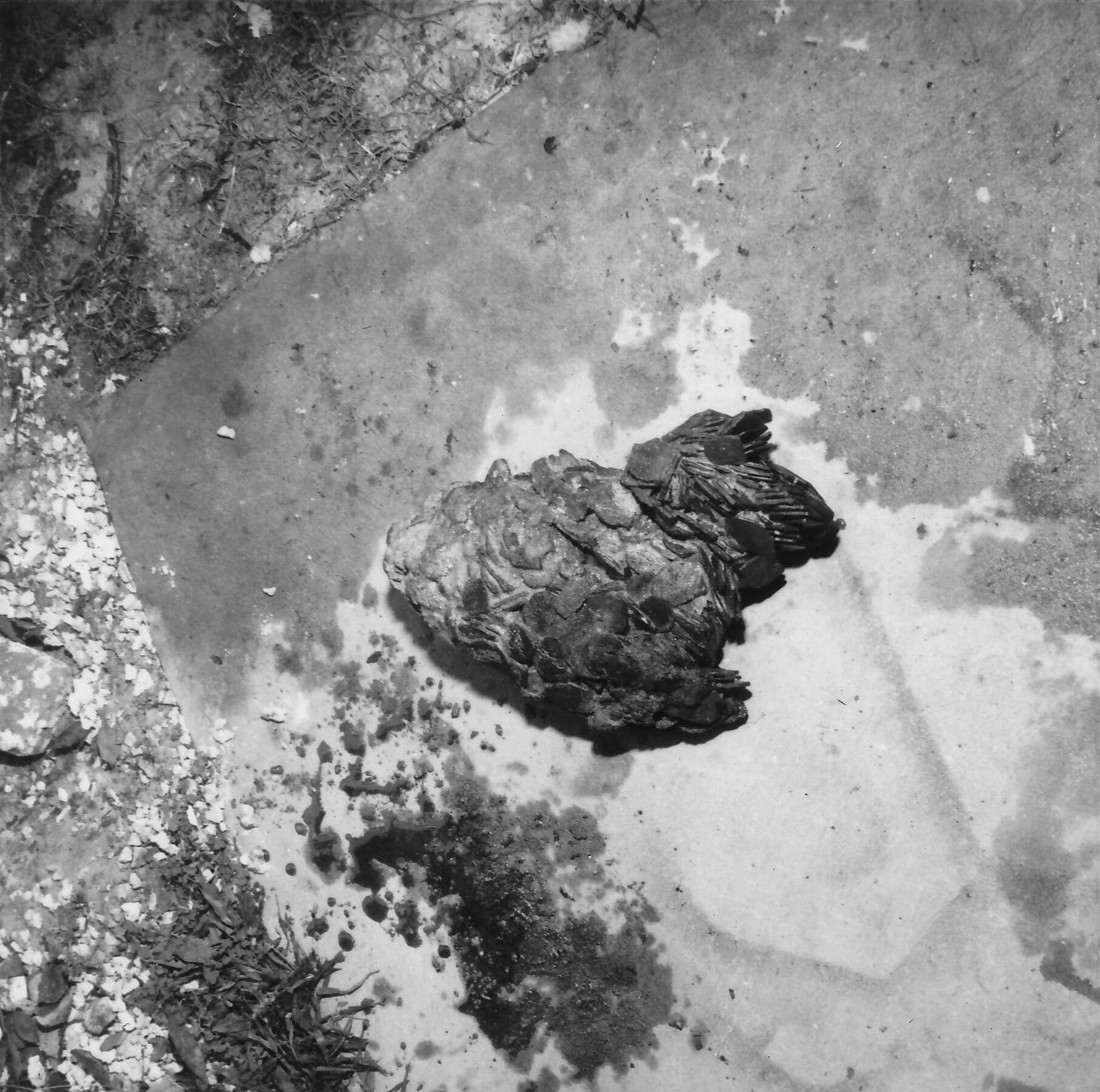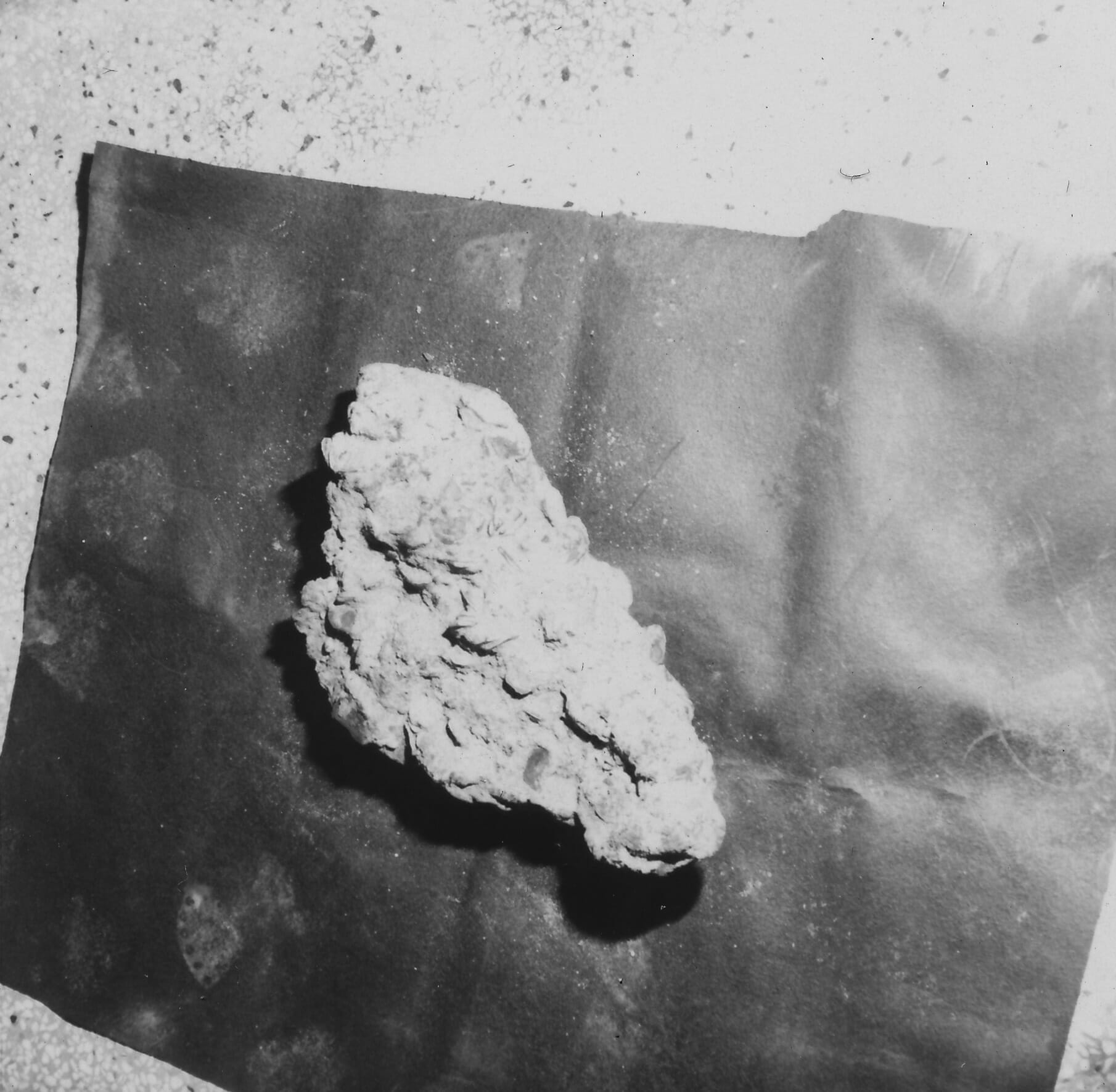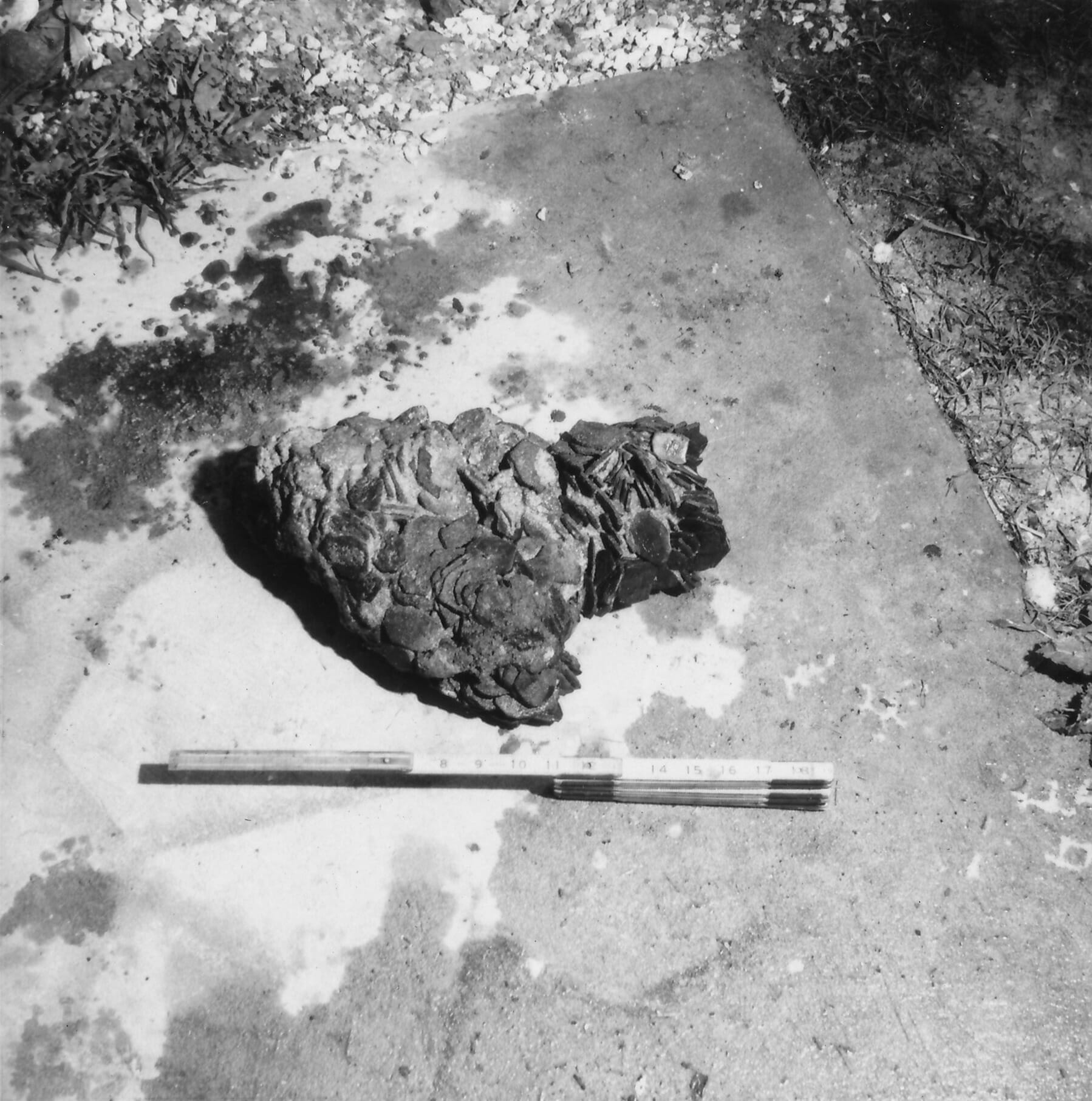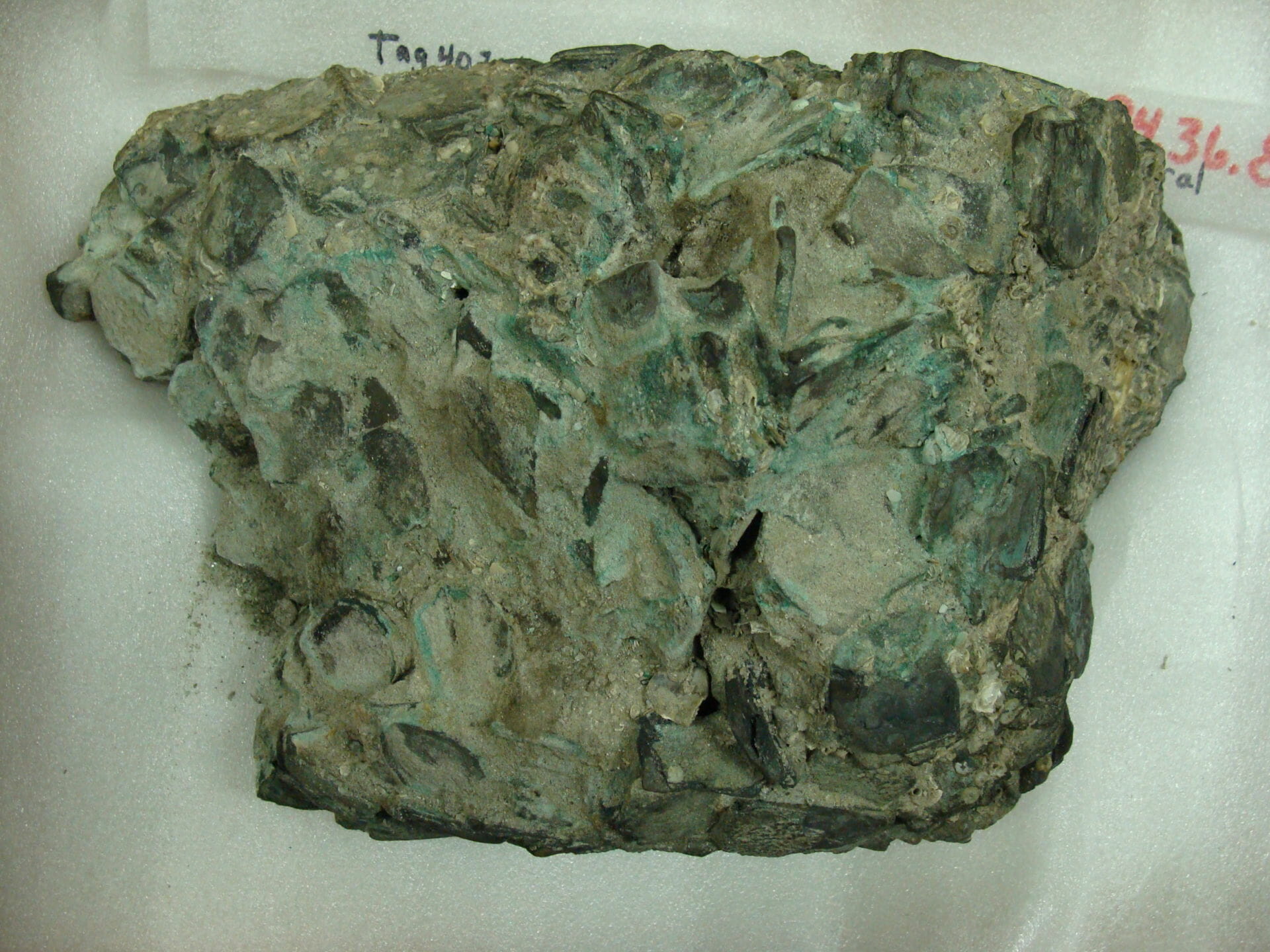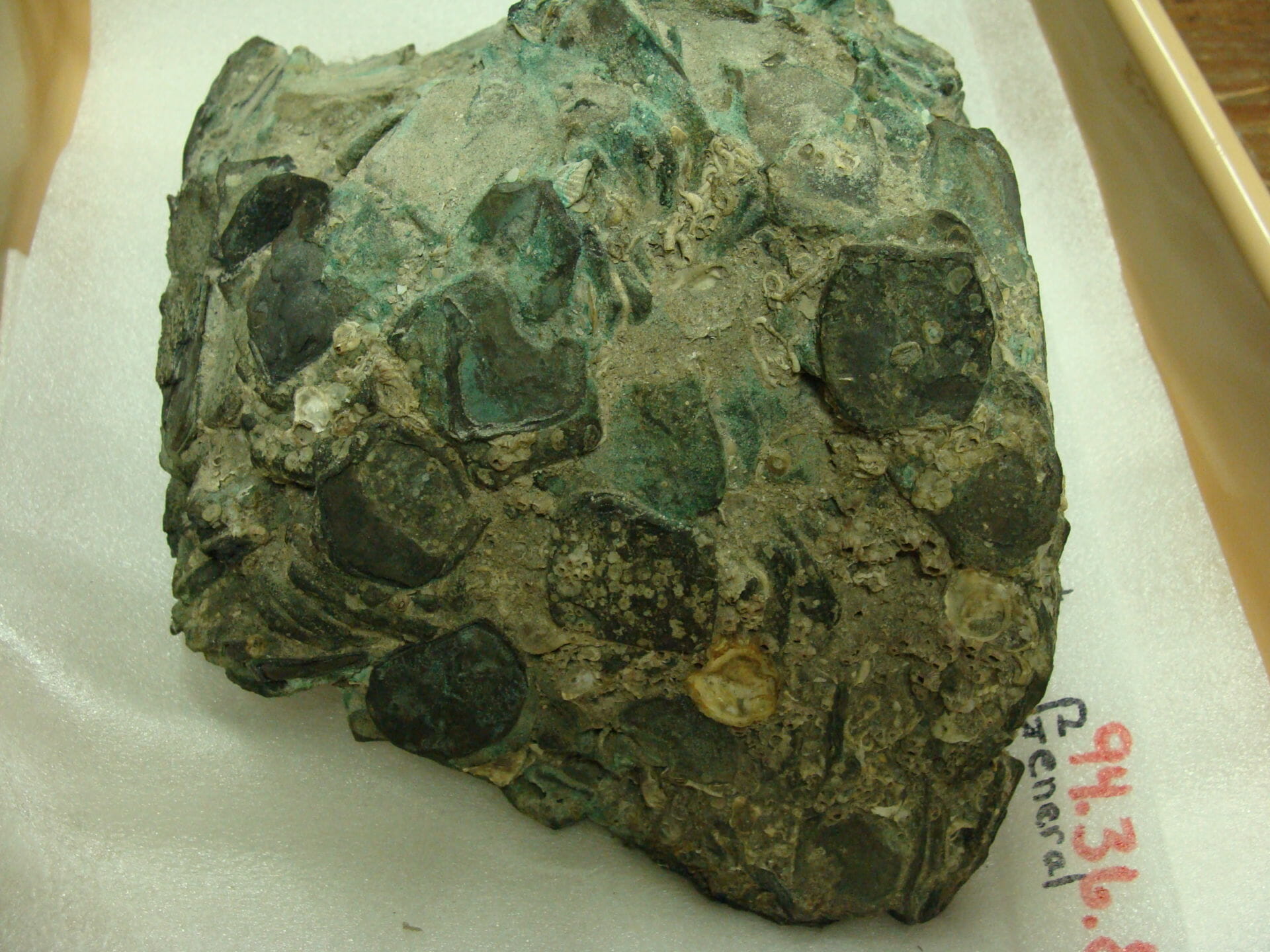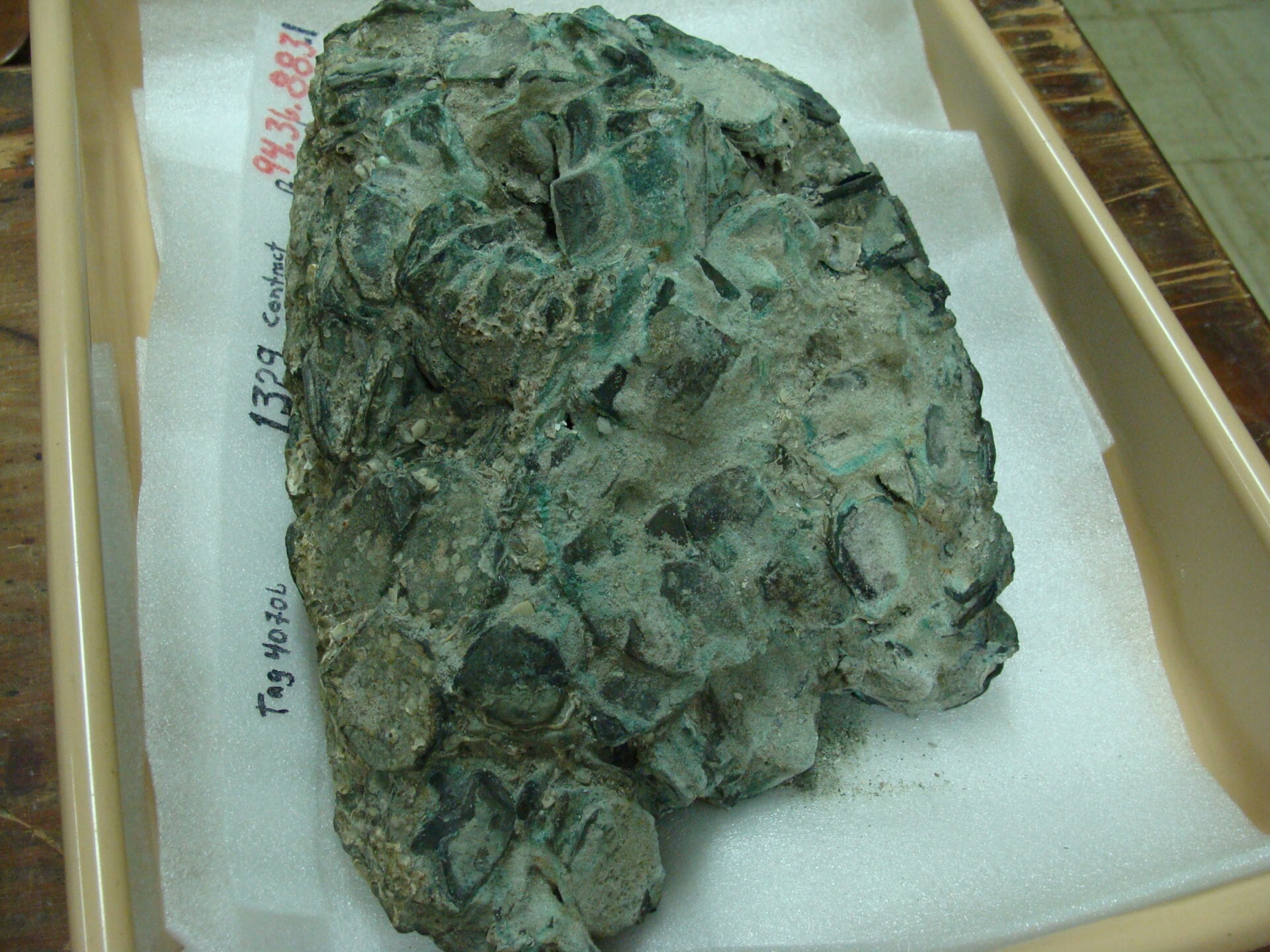Our Treasure Month of the for March is an item that we chose to feature because it is, at least presently, the last one like it in existence. Companions to this artifact were found at a 1715 Fleet wreck site near Sebastian Florida referred to as the “Cabin Wreck”. (This wreck is thought to be either the Santo Cristo de San Roman or the Nuestra Senora de la Regla as some scholars are divided on this issue.) The fact that so few were ever recovered (maybe less than a dozen) attests to its rarity. The odd thing about this item is that it remains the sole survivor of this group. The reason? Because once recovered they were destroyed. Why would such a seemingly rare and valuable artifact be summarily destroyed? Here is the amazing story.
History records that in January 1961, members of what was later to become the Real Eight CompanyAlso referred to occasionally as “The Real 8 Company”- was incorporated in 1961. It had eight members….Kip Wagner, Kip Kelso, Dan Thompson, Harry Cannon, Lou Ullian, Del Long, Erv Taylor and Lis... More made their first major recovery of silver coins from a 1715 Fleet wreck site later known as the “Cabin Wreck”. Along with hundreds of loose silver coins strewn across the ocean floor in three fathoms (eighteen feet) of water, were two large rocklike objects. Blackish-green in color, they were lightly encrusted and about a foot and a half wide. The two objects were referred to as “clumps” but technically are known as “aggregates”. The clumps, it was later ascertained, were the remains of coins that had been originally packed in cloth bags and then placed in a small wooden box. This box, or “treasure chest,” originally would have held three such bags. Over time, the cloth bags that held the coins tightly in the confines of the small box disintegrated. The coins, due to the action of the seawater, turned blackish-green and became fused together taking on the shape of the bags in the chest that held them. Hence, the appearance of large clumps. The clumps found on that cold January day in 1961 were absent the box that they were packed in. It is assumed that the wooden containers had long been destroyed, eaten away by teredo worms centuries ago. But this does not answer our question. Why were these exceedingly rare artifacts destroyed?
The answer is found within the clumps themselves. It is estimated that each cloth bag contained anywhere from 1500 – 2000 coins. These coins were all silver eight reales. At the specified weight per coin, each bag would weigh almost 90 pounds. One of the clumps found in 1961 weighed 77 pounds. The reduction in weight could be attributed to turbulence and corrosion which over time could cause some coins to become separated from the main clump, possibly forming smaller clumps that were also found. The clumps were broken down to get to the individual coins that made up its contents. At the time, the individual coins were believed to be more valuable than the clump itself. As such, the larger clumps were destroyed, save one. The archival images below show pictures of the large clumps found in 1961.
Our featured treasure is the last of its kind. The largest aggregate known to exist from the 1715 Fleet. Weighing in at 55.6 pounds, it is truly a site to behold. This rare specimen made an appearance at the 2015 Florida United Numismatic (FUN) Show in Orlando. Through a cooperative effort between the State of Florida, Department of Archaeological Research (BAR) and the 1715 Fleet Society, arrangements were made to transport this item and other Fleet artifacts from Tallahassee to Orlando. As can be seen in the photo below, a special container was made to stabilize the aggregate as it traveled over 260 miles from its home in Tallahassee to Orlando.,
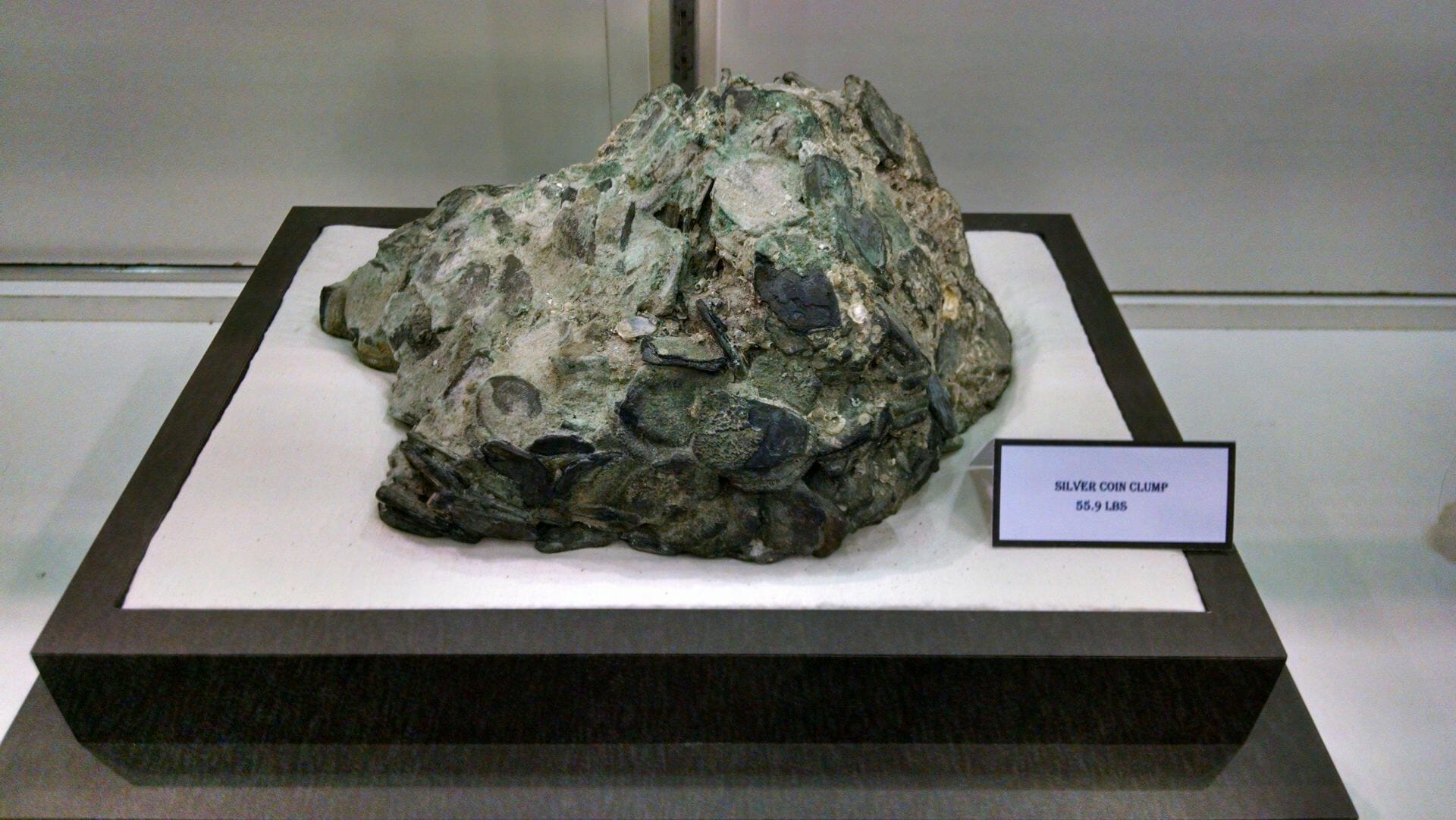
Despite its rugged appearance this artifact is quite fragile which explains the need for extra special care in handling. If not handled properly, parts of the aggregate could become loose and disengage from the main mass.
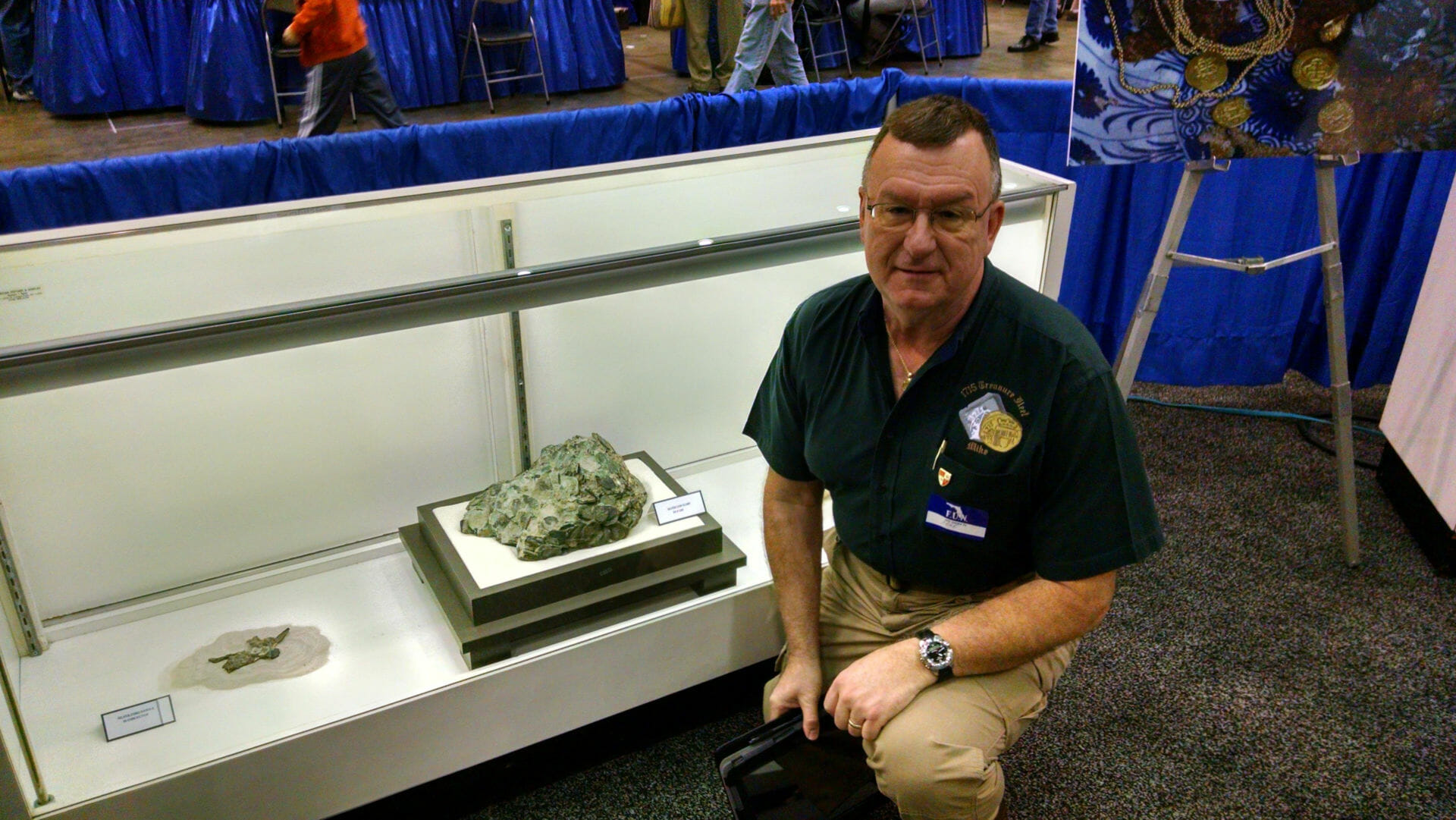
One can still see the blackish-green color that is so characteristic of aggregates, large and small. Upon close observation large silver coins (here, eight reales) can be seen fused together by a sort of “cement” consisting of the decomposed remains of microscopic animal life.

In 2011, the Fleet Society arranged to access the State of Florida’s collection of 1715 Fleet coins and artifacts. This arrangement was with the help and cooperation of the BAR in Tallahassee. Below are some images taken of the massive 55.9 pound clump in the vault containing the States collection of Fleet related artifacts.
As this post was being completed, we received this picture (below) from well-known author and 1715 Fleet historian Tyrell Armstrong. The picture was taken in the wheelhouse of the Derelict which was the recovery vessel used by the Real Eight CompanyAlso referred to occasionally as “The Real 8 Company”- was incorporated in 1961. It had eight members….Kip Wagner, Kip Kelso, Dan Thompson, Harry Cannon, Lou Ullian, Del Long, Erv Taylor and Lis... More. He received the image from Tommy Gore who was the marine agent representing the State of Florida during the heyday of treasure salvaging operations in the 1960’s. Mr. Armstrong believed that the large aggregate in the picture is our Treasure of the Month.
We decided to contact Mr. Gore to see if he recalled the story behind this image. At 82 years of age, he still vividly remembered the day in June of 1967 when he was aboard the Derelict and was part of a team that recovered a nearly complete treasure chest and its contents…three bags of silver coins fused together into large clumps. At around the same time they recovered thousands of other silver reales and the aggregate in the picture. It was not part of the contents of the treasure chest but was found in the same general area. All of this was at the Cabin Wreck site.
Mr. Gore recalled taking the picture of the aggregate in the wheelhouse of the Derelict and in 2015 when he saw the huge artifact again at the Fun Show in Orlando, he made it a point of telling the BAR representative that he was there when it was found.
For more information (and pictures) of other (though much smaller) aggregates see our Treasures of the Month for February 2012, February 2015, October 2015 and May 2020.
Special thanks to Tyrell Armstrong and Tommy Gore for providing images and content for this post.
